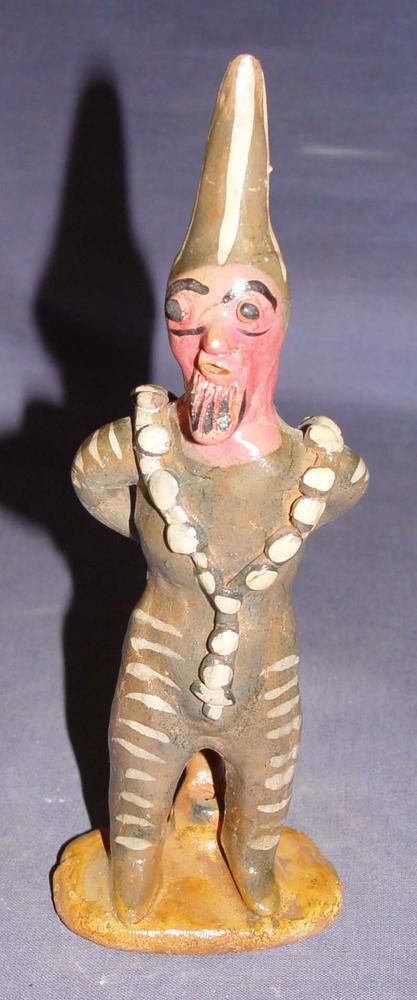Sounds of History: Polyphony in Pre-Hispanic Music and the Sound of Pre-Hispanic Instruments
The pre-Hispanic instruments that are known and preserved as museum pieces belonged to the Mayan, Mixtec, Zapotec, Purepecha, Olmec, Totonaca, and Mexica cultures.

The existence of pre-Hispanic music is based on archaeological evidence of instruments used by ancient cultures, but also on the use of different tonal scales, and not only the pentatonic (five-tone) that the ancient inhabitants of Mexico knew and applied. With a range of antiquity that goes from 3500 B.C. to several decades after the Conquest, the pre-Hispanic instruments that are known and preserved as museum pieces belonged to the Mayan, Mixtec, Zapotec, Purepecha, Olmec, Totonaca, Mexica, and ancient northwestern groups.
Pre-Hispanic music was not only pentatonic (musical scale of five tones with the absence of semitones) as it was believed until a few years ago, because nowadays it is known that they used a diatonic scale, polyphony, and microtony, which included different families of instruments; they had the transverse flute and different strings, and they intuited concepts such as pink noise (which descends 3 decibels per octave).
From archaeology and ethnomusicology, it is now possible to discover the sonority of instruments as varied as whistles, ocarinas, flutes, huéhuetl, rainsticks, snails, teponaztli, wind cutters, pots, and stone marimba, among others.
The sound of pre-Hispanic instruments
Although it is not possible to know exactly how pre-Hispanic music sounded, ethnomusicology research has made it possible to intuit its sonority thanks to native expressions, which have survived for nearly 500 years, as part of some festivities and rites in Oaxaca, Totonacapan, and the Yucatan Peninsula. Just as the language and customs of the indigenous peoples have persisted, so has the music, but mixed with Western culture.
In the Maya Hall of the National Museum of Anthropology, there is a triple clay flute, which emits tones and semitones. Archaeologists also found in Veracruz another instrument of this type, of Totonaca filiation and dating from the Late Classic period (between 500 and 800 A.D.), which instead of holes for obturation and playing a specific tone, has a plunger inside which allows playing chromaticisms or glissandos.
In the vast universe of pre-Hispanic instruments, there are reed flutes (ácatl, in Nahuatl), which instead of holes, have grooves or channels, allowing microtonalism (which uses musical intervals smaller than a semitone). In Western music, the Mexican Julián Carrillo, at the end of the 19th century, proposed the use of microtones.
In certain pictorial representations, the dimensions of the Mayan trumpets can be recognized, like those that appear in the murals of Bonampak (north wall of Structure 1). Likewise, this type of instrument can be appreciated in ancient vases, whose dimensions reach the same height as the musicians.
The most important contribution of this ancient civilization were the flutes of three tubes, which allowed the performer to play the melody and three voices with only one instrument; in addition to the zacatán (drumhead drum) and the tunkul, used for percussions, as well as conch shells, rattles, and ocarinas.
In Mesoamerica, Mexica organology was taught in the Mixcoacalli (House of the cloud serpent), a place to keep musical instruments, and the Cuicacalli (House of the song), where poetry was taught, along with dance and music, as noted in the Historia general... by Fray Bernardino de Sahagún. Some chroniclers speak of the cuicámatl or book of songs, in which music was recorded.
The main Mexica instruments are the huéhuetl, vertical drum built with a hollowed tree trunk, the teponaztli, also of wood with two reeds formed by narrow incisions and the atecocolli, which is a trumpet made with a marine snail; besides the flutes of four holes, and a whistle that has been called "of the death", but that reproduces the sound of the wind.
In the West of Mexico, there is a very special Purépecha whistle, made of wood or bone, which was placed inside the mouth, between the teeth and the lips, which produced a very loud whistle and was used to call animals and hunt them.
What is now called pre-Hispanic music, are musical projections or improvisations with ancient instruments or replicas of these, which brings one closer to how they sounded in pre-Hispanic times, where music was used for parties, rites, and war, as it was a daily way to please the gods, obtain health, harvests, rains, and conquests.
Source INAH




